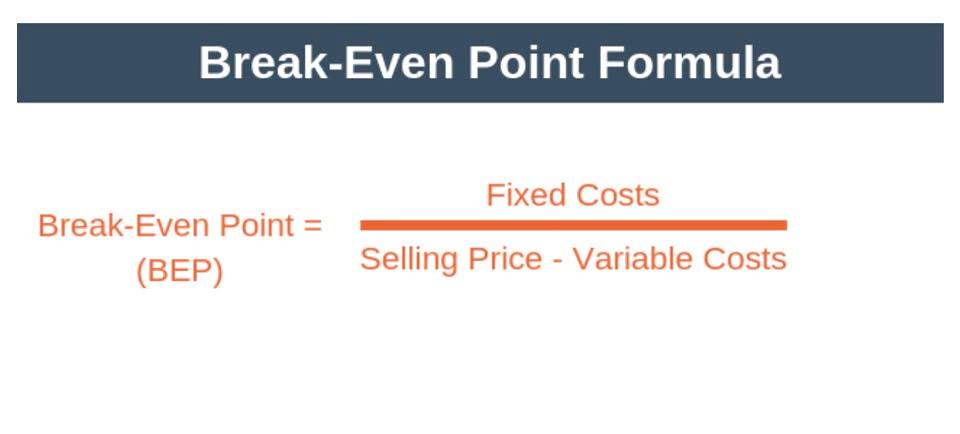
Understanding the fundamentals of nonprofit accounting is essential for organizations to achieve their missions, maintain compliance, and ensure financial transparency. QuickBooks gives nonprofits the ability to perform basic nonprofit accounting functions. One of the best ways to ensure your organization’s accounting is held to a high standard is by using software that’s specifically designed for nonprofits. It’s a good idea to make use of nonprofit accounting software, which comes built-in with the features you need to keep your nonprofit’s accounting on track. These features include nonprofit reporting, GAAP compliance, and simplified tax filing for organizations. The best nonprofit accounting software should include all the core accounting features and functionality all businesses need, such as the ability to send invoices and track spending.
Balance Sheet vs. Statement of Financial Position
- So you and your team can easily see where you’re beating your plan or coming up short.
- For example, a small or mid-sized nonprofit might not need complicated financial tracking, but it might benefit from all-in-one management software.
- Donors want this figure to be as low as possible, which implies that the bulk of their contributions are going straight to programs.
- It also more accurately captures your ‘economic reality’ and helps you predict your finances better.
- Since nonprofits do not have owners, there is no owner’s equity or stockholders’ equity and there cannot be distributions to owners.
- By tracking categories, you know if funds are being allocated to the right projects based on donor intent.
- The tax code for nonprofits can be confusing, and tax reforms can affect everything from how you report income to how you manage volunteers.
Donors will be more likely to give if they feel confident that you will use their money wisely. This includes investing in necessary overhead expenses such as technology, personnel, and other operational costs. Ensuring you take care of overhead expenses before https://www.bookstime.com/ seeking donations also demonstrates good stewardship of funds, which is an important factor in decision-making for potential donors. Most importantly, you should adhere to proper disclosure procedures in all financial statements as outlined in GAAP guidelines.
How do non-profits manage fund accounting to ensure donor restrictions are followed?
- Other features you may want to consider include whether the software has a mobile app, how good its customer service is and how well it does with accounts receivable (A/R) and financial reporting.
- Using this report, nonprofits can determine the trends that are impacting the revenue and expenses incurred at their organization.
- These companies don’t have a commercial purpose and, in many cases, get their funding from donations, fundraising events, and government and private grants.
- It’s also important to create a degree of separation between your day-to-day operations and your board members.
- Accounting and bookkeeping are often used in the same conversation because they are both critical to managing finances.
- Rather, nonprofits are audited to ensure their internal controls are up-to-scratch and sometimes to confirm they’re using funds appropriately.
But nonprofits often have revenue that is restricted for certain reasons–the funds may be reserved for a certain program, be required to be spent at a certain time, or have other unique requirements for its usage. Letting nonprofit accounting someone else handle bookkeeping, payroll, and other responsibilities can often allow people to focus on the nonprofit’s mission. It lets them focus on attracting donors, building engagement, fundraising, etc.
Financial Management for Nonprofits

If you’ve dealt with for-profit cash flow statements before, this should look very familiar. Restricted net assets are donations that have certain terms and restrictions attached, have special accounting procedures, and must be kept separate from other net assets. For more information about how to create a budget, check out the National Council of Nonprofits guide to Budgeting for Nonprofits. They need an organized system that makes sure purchases are ordered, budgeted for, and fulfilled properly from the get go. Properly paying employees can help boost morale and motivation within the organization, leading to greater job satisfaction, improved productivity, and better quality services from the nonprofit. It is important to take care of overhead before seeking out donors for a nonprofit because it demonstrates financial responsibility and a commitment to efficiency.
- Meanwhile, nonprofit organizations use a fund accounting system that shifts the focus away from profit and instead centers on accountability.
- It’s important for your board to be aware of upcoming plans and initiatives, and they may need to approve increases to the budget.
- Nonprofits use financial statements to provide transparency and accountability so nonprofit stakeholders, donors, and government agencies can evaluate the organization’s financial health.
- Regular budget reviews can help identify areas where there may be discrepancies between projections and actual results, enabling timely adjustments and informed decision-making.
- Different states have different filing and informational registration requirements, so stay up-to-date on changes to your state’s regulations for nonprofit reporting.
You’ll need an accounting program to track everything and be prepared when tax season rolls around. Generally accepted accounting principles (GAAP) are a set of accounting procedures and standards issued by the Financial Accounting Standards Board (FASB). All public companies in the U.S. must follow GAAP and private companies generally do as well. Nonprofits must also follow GAAP standards, although their rules are sometimes slightly different from the ones for-profit companies follow. The purpose of a not-for-profit or nonprofit organization is to solely serve the interests and objectives of its members or the group it is supporting.

Bookkeeping for nonprofits
And it may also include non-cash donations (or in-kind donations) of goods or services. Get our FREE GUIDE to nonprofit financial reports, featuring illustrations, annotations, and insights to help you better understand your organization’s finances. An income statement shows an organization’s revenue, expenses, and net income(loss) over a specified period. Creating internal policies and controls will significantly improve your fraud protection.
Learn the key differences between between these two entities to ensure your organization is classified correctly. Our writing and editorial staff are a team of experts holding advanced financial designations and have written for most major financial media publications. Our work has been directly cited by organizations including Entrepreneur, Business Insider, Investopedia, Forbes, CNBC, and many others. Some challenges include managing limited resources, staying updated with regulatory changes, and ensuring the organization’s financial sustainability while adhering to its mission. Their functions extend into strategic planning, budgeting, financial forecasting, auditing, and even fundraising.
Nonprofit accounting standards – PwC
Nonprofit accounting standards.
Posted: Thu, 01 Jun 2023 10:53:24 GMT [source]
It typically details all revenue, such as contributions, grants, salaries, administrative costs, and program costs. Additionally, you’ll need financial statements to obtain and maintain funding, grants, and other forms of support. Accurate financial statements also ensure nonprofits manage charitable resources responsibly, ethically, and according to applicable laws.
How does a nonprofit accountant contribute to fundraising and grant management?
A nonprofit will need to provide receipts so donors can write off these donations. Outsourced bookkeeping can help an organization handle these tasks, while offering advice on changing tax requirements and codes. To complete Form 990, you’ll need to provide information about your organization, its mission, and how it’s achieving its goals. It ensures that your nonprofit is actually acting as it claims to, using your financial statements as evidence. This form is required for most tax-exempt organizations that receive more than $200,000 in annual revenue or hold more than $500,000 in assets.





Neueste Kommentare